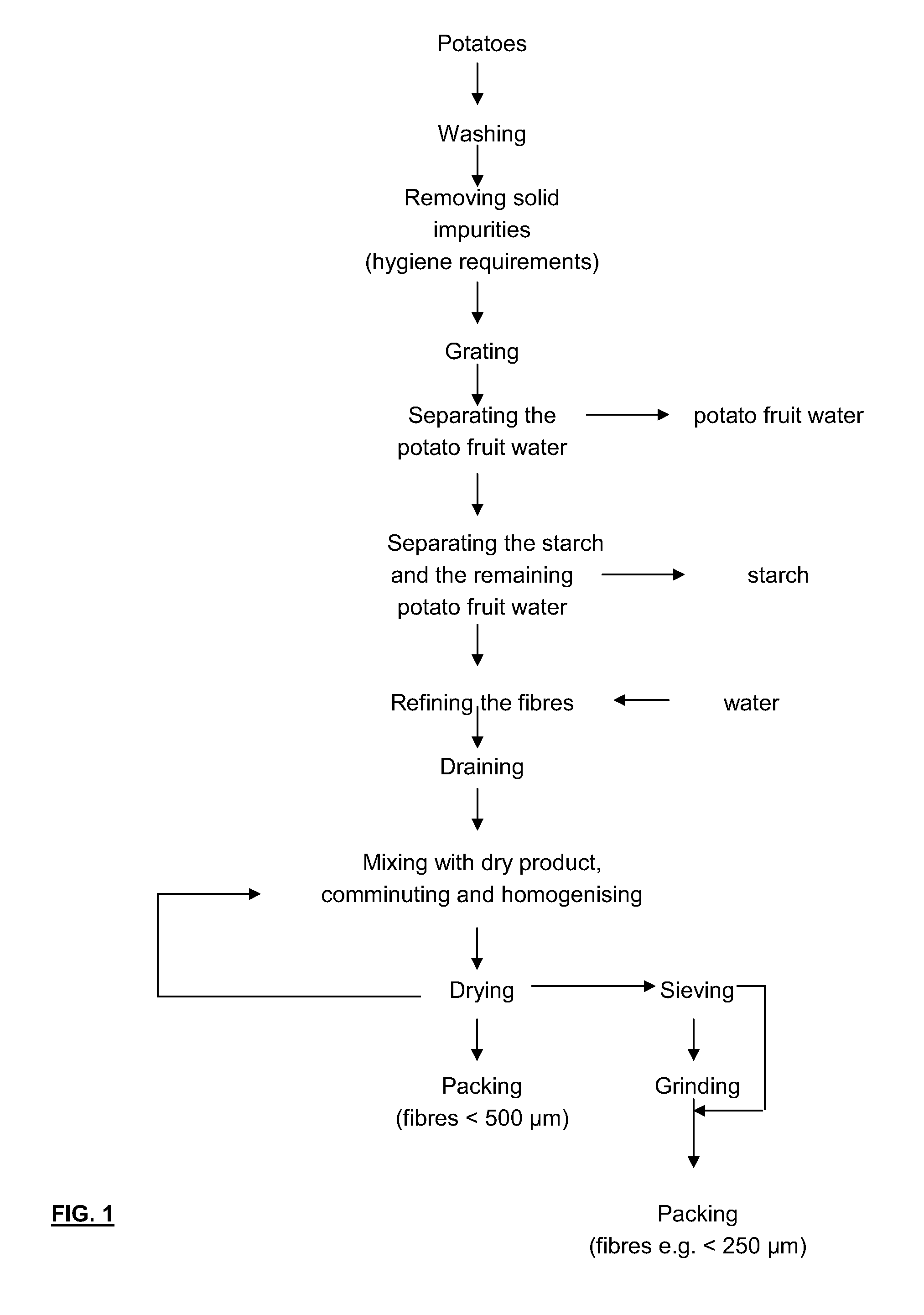Potato Fibres, Methods of Preparing Them and Their Use
a technology of potato fibres and potato fibers, which is applied in the field of potato fibre preparation methods, can solve the problems of limited functionality, large number of plant fibres known for human consumption and likewise for technical applications, and high cost of raw materials and/or limited availability and/or production processes, etc., and achieves low content of glycoalkaloids, high water binding capacity, and freedom from allergens
- Summary
- Abstract
- Description
- Claims
- Application Information
AI Technical Summary
Benefits of technology
Problems solved by technology
Method used
Image
Examples
Embodiment Construction
[0012]It has surprisingly been found that the methods disclosed herein for preparing potato fibres is extremely inexpensive, because no additional effort compared to the production of potato starch is necessary until the separation of the potato starch and fibres, and it is only after this point that the special production process for the potato fibres begins, which causes lower costs than the state of the art and at the same time improves the quality of the fibres compared to the state of the art. Starch potatoes are used as the starting materials, and these are inexpensive and available in large quantities.
[0013]A major advantage of the present methods is that potato fibres with a low glycoalkaloid content of only 100 to 120 ppm can be prepared, in contrast to a content of 320 to 450 ppm of glycoalkaloids if, for example, the method of EP 0 413 681 B1 is used. A content of about 100 to 120 ppm of glycoalkaloids corresponds to about half the levels which potatoes naturally contain....
PUM
 Login to View More
Login to View More Abstract
Description
Claims
Application Information
 Login to View More
Login to View More - R&D
- Intellectual Property
- Life Sciences
- Materials
- Tech Scout
- Unparalleled Data Quality
- Higher Quality Content
- 60% Fewer Hallucinations
Browse by: Latest US Patents, China's latest patents, Technical Efficacy Thesaurus, Application Domain, Technology Topic, Popular Technical Reports.
© 2025 PatSnap. All rights reserved.Legal|Privacy policy|Modern Slavery Act Transparency Statement|Sitemap|About US| Contact US: help@patsnap.com

